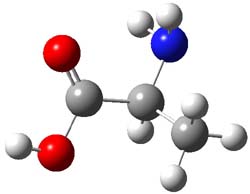How is the aromaticity of benzene affected by nitrogen substitution? Are pyridine and pyrimidine more or less aromatic than benzene? This question has been addressed many times, and Schleyer adds to this discussion with a B3LYP/6-311+G** study of the entire series of azines.1 Analysis of the aromaticity is based on a two metrics: NICS(0)πzz and extra cyclic resonance energy (ECRE). The NICS(0) πzz value is now the ring current measurement advocated by Schleyer as it only includes the π orbitals and uses the tensor component perpendicular to the ring. ECRE is obtained by comparing block-localized energies of the azine to appropriate acyclic references.
Interestingly, both metrics give the same result, namely, that the aromaticity of benzene and all of the azines 1-6 are essentially equally aromatic.

References
(1) Wang, Y.; Wu, J. I. C.; Li, Q.; Schleyer, P. v. R., "Aromaticity and Relative Stabilities of Azines," Org. Lett., 2010, 12, 4824-4827, DOI: 10.1021/ol102012d
InChIs
1: InChI=1/C5H5N/c1-2-4-6-5-3-1/h1-5H
InChIKey=JUJWROOIHBZHMG-UHFFFAOYAY
2a: InChI=1/C4H4N2/c1-2-4-6-5-3-1/h1-4H
InChIKey=PBMFSQRYOILNGV-UHFFFAOYAA
2b: InChI=1/C4H4N2/c1-2-5-4-6-3-1/h1-4H
InChIKey=CZPWVGJYEJSRLH-UHFFFAOYAT
2c: InChI=1/C4H4N2/c1-2-6-4-3-5-1/h1-4H
InChIKey=KYQCOXFCLRTKLS-UHFFFAOYAV
3a: InChI=1/C3H3N3/c1-2-4-6-5-3-1/h1-3H
InChIKey=JYEUMXHLPRZUAT-UHFFFAOYAF
3b: InChI=1/C3H3N3/c1-2-5-6-3-4-1/h1-3H
InChIKey=FYADHXFMURLYQI-UHFFFAOYAY
3c: InChI=1/C3H3N3/c1-4-2-6-3-5-1/h1-3H
InChIKey=JIHQDMXYYFUGFV-UHFFFAOYAG
4a: InChI=1/C2H2N4/c1-2-4-6-5-3-1/h1-2H
InChIKey=DPOPAJRDYZGTIR-UHFFFAOYAI
4b: InChI=1/C2H2N4/c1-3-2-5-6-4-1/h1-2H
InChIKey=ZFXBERJDEUDDMX-UHFFFAOYAH
4c: InChI=1/C2H2N4/c1-3-5-2-6-4-1/h1-2H
InChIKey=HTJMXYRLEDBSLT-UHFFFAOYAH
5: InChI=1/CHN5/c1-2-4-6-5-3-1/h1H
InChIKey=ALAGDBVXZZADSN-UHFFFAOYAQ
6: InChI=1/N6/c1-2-4-6-5-3-1
InChIKey=YRBKSJIXFZPPGF-UHFFFAOYAK







